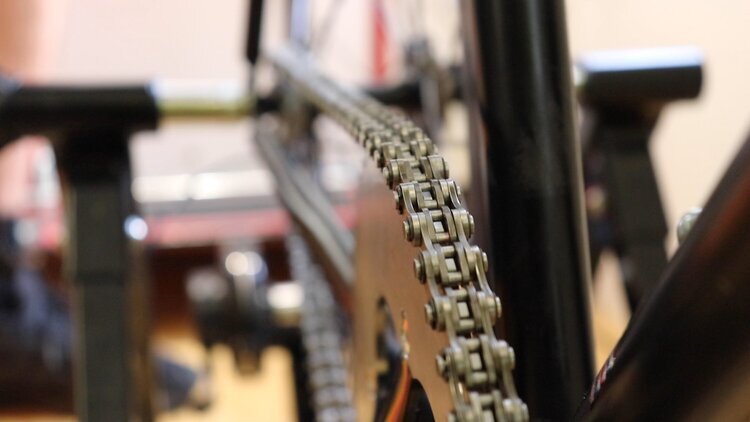Here at New Motion Labs , we’ve been working non-stop to develop and promote the latest technologies in the field of mechanical engineering. We want to spark curiosity and be part of a new revolution in mobility and automation, bringing new tech that will disrupt and improve our world.
Here’s how.
The Link Drive is one of the biggest breakthroughs in mechanical power transmission since the invention of the roller chain.
The original roller chain is a type of chain drive which has been used for over a century in the transmission of mechanical power for a range of devices, from standard conveyor belts to printing presses and bicycles. Hans Renold is credited with its invention in 1880, but the link chain’s design was actually inspired by sketches made by Leonardo Da Vinci in the 16th century. So maybe it’s time for a change?
Enter: the Link Drive

The Link Drive uses a revolutionary new method of dual engagement to distribute transferred power much more effectively than a traditional roller chain. The result? Step-change increases in efficiency, lifetime and miniaturisation.
The link drive reduces friction, noise, wear and efficiency losses, radically improving power distribution, efficiency and system lifetime, whilst requiring less maintenance than conventional technologies. Not only that, it transfers the same amount of power as a traditional roller chain despite being smaller and lighter.
The Link Drive’s lightweight design, advantages in terms of power distribution, reliability and durability make it ideally suited to the cycling market.
Specifically, E-bikes would benefit from replacing the traditional roller chain with the Link Drive.
Here’s why:

- Every time a cyclist steps down on a pedal, nearly all of the power (over 60%) is applied on just one tooth of the sprocket. On an e-bike, this is much worse since 2 to 3 times this power is acting on this one point.
- Traditional roller chains are heavy, noisy and require regular lubrication and maintenance.
- High-end E-bikes feature belt-drives in place of roller chains, however these also wear quickly, are hard to maintain and repair, require a specially designed bicycle frame and are expensive.
The Link Drive solves all of these problems, employing dual engagement to distribute power much more effectively; increasing efficiency, lifetime and enabling miniaturisation of the chain. Plus, this revolutionised technology doesn’t require a special drive-train – it can be used with standard gear systems, is smaller and lighter than both roller chains and belt drives, and doesn’t require regular maintenance…What’s not to like?
Cycling – as a hobby and means of transport – is probably more popular today than ever before, so it’s probably time that we tweaked the design, just a little bit. And if E-bikes are the future of cycling, then the Link Drive is the future of E-bikes.








